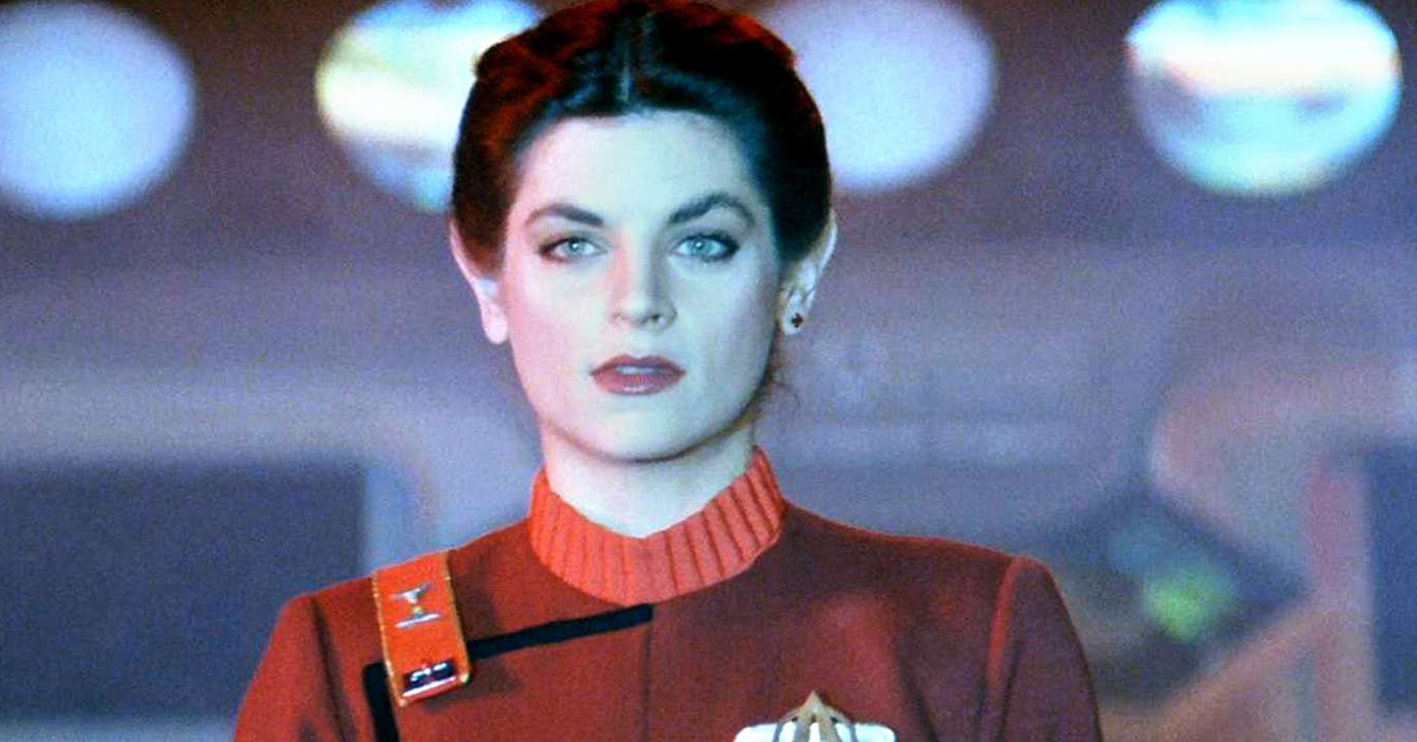Kirstie Alley was a complete unknown when she landed her Star Trek gig. Playing Saavik, a Vulcan Starfleet officer in 1982’s Wrath of Khan, Alley – who was 30 turning 31 during the shoot – was a newcomer to the business, and still five years away from her star-making role in TV’s Cheers. It was odd, then, that when Saavik returned in 1984 sequel Star Trek III: The Search for Spock, Alley had been replaced by Robin Curtis.
Fans have often wondered why Alley never reprised her breakthrough role. Though the late actress revealed towards the end of her life that she had clashed with Captain Kirk actor William Shatner behind the scenes, her decision not to return came down to a simple matter of money. But while Alley said she was offered less to play Saavik a second time, Spock actor Leonard Nimoy argued otherwise.
“I faked my résumé”
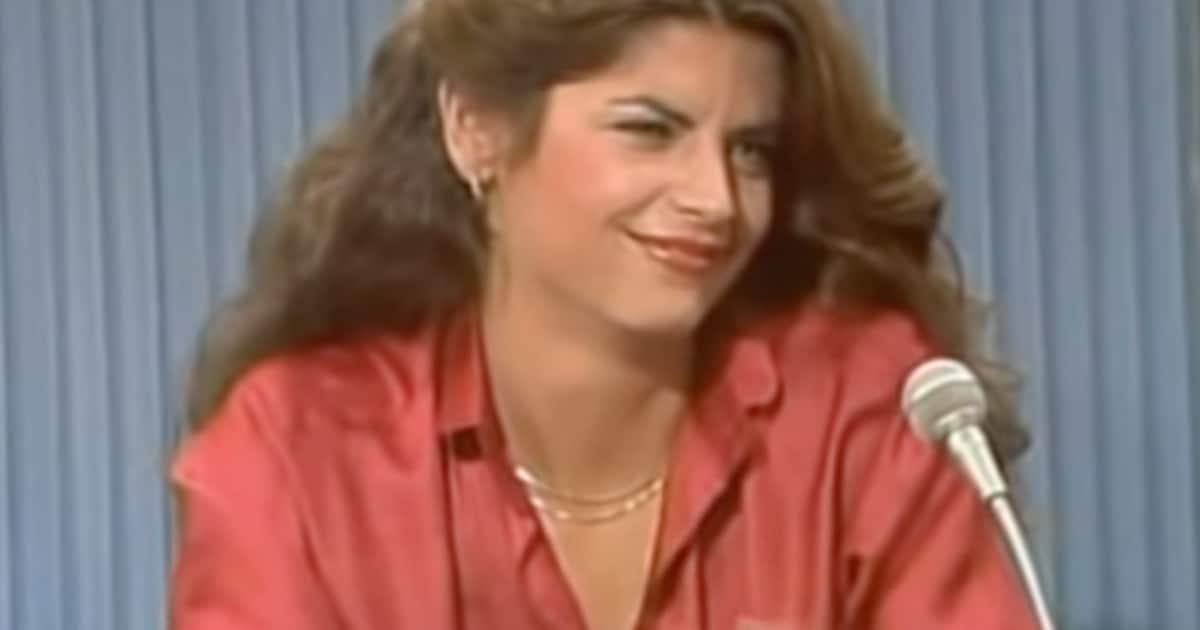
Kirstie Alley did not set out to become an actress. When the Kansas native moved to Los Angeles with first husband Bob Alley, she was an aspiring interior designer and sometime housekeeper, as well as a recent convert to the Church of Scientology. After making an appearance on TV game show Match Game in 1979, however, Alley became more interested in pursuing a career in front of the camera.
Alley had literally no professional acting experience when the opportunity arose to take the role of Saavik in Star Trek II: The Wrath of Khan. Alley revealed at a 2016 convention that she was familiar with the sci-fi franchise: “I had watched Star Trek, the TV series… people my whole life teased me, because when I’m talking and I don’t really pay attention to what I’m doing, my eyebrow goes up. Right? So even just my friends would go, ‘Oh, God, your eyebrow goes up like Spock.'”
For this reason, Alley had long thought she’d be a good fit for a Vulcan role herself. Despite her newcomer status, Alley’s initial Saavik audition went well: “I could tell I did a good job. [Director] Nick Meyer liked me.” To grease the wheels, Alley later admitted she “faked my résumé. I’m sure everyone knew it, but I thought it sounded good.”
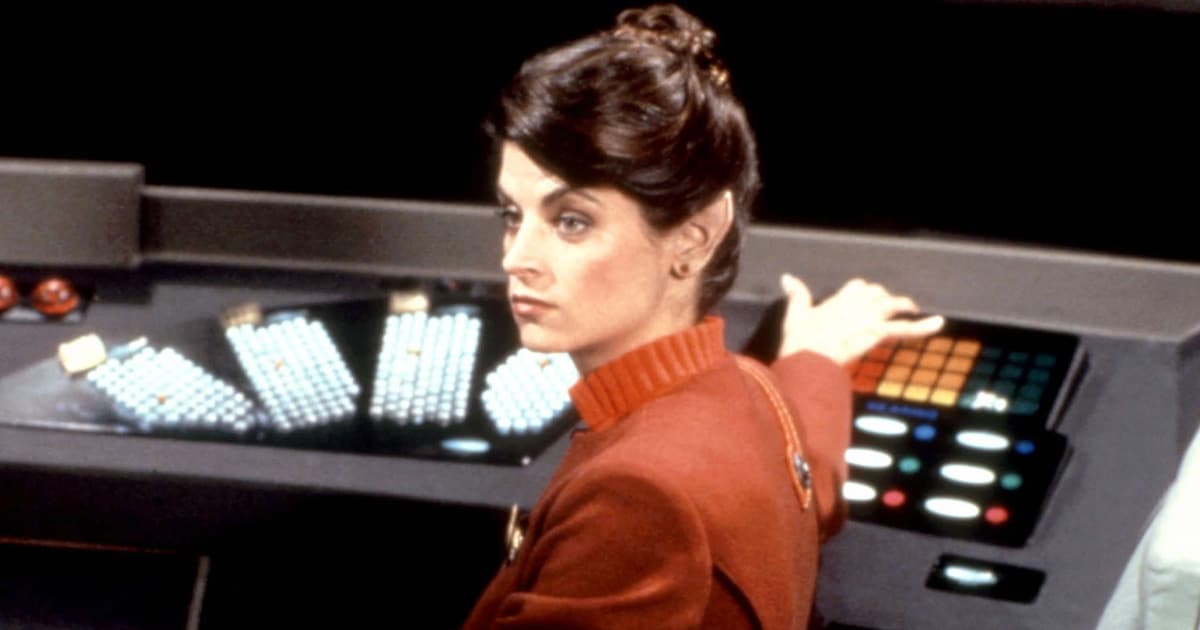
Director Nicholas Meyer was indeed taken with Alley, describing her as “this stunningly attractive woman with this amazing pair of eyes and big mane of hair… I don’t think she was trying to be original, or as some might imprecisely call ‘kooky,’ but she nailed it.”
Alley quickly became Meyer’s first pick for Saavik, but she was still required to attend a few more auditions. However, things took a tragic turn when Alley’s mother was killed and her father seriously injured in a car crash, mere days before Alley was set to attend her final audition for the role of Saavik.
Alley refused to come back in to audition until her father was out of intensive care – and “by some kind of huge miracle they said, ‘OK. We’ll wait.’ Which I still, to this day, am more grateful for than anything that’s ever happened in my career.” Once her father regained consciousness and was on the road to recovery, Alley attended her final audition, landed the role, and Star Trek II began shooting in LA in November 1981.
“You’re not going to let her do that, are you?”
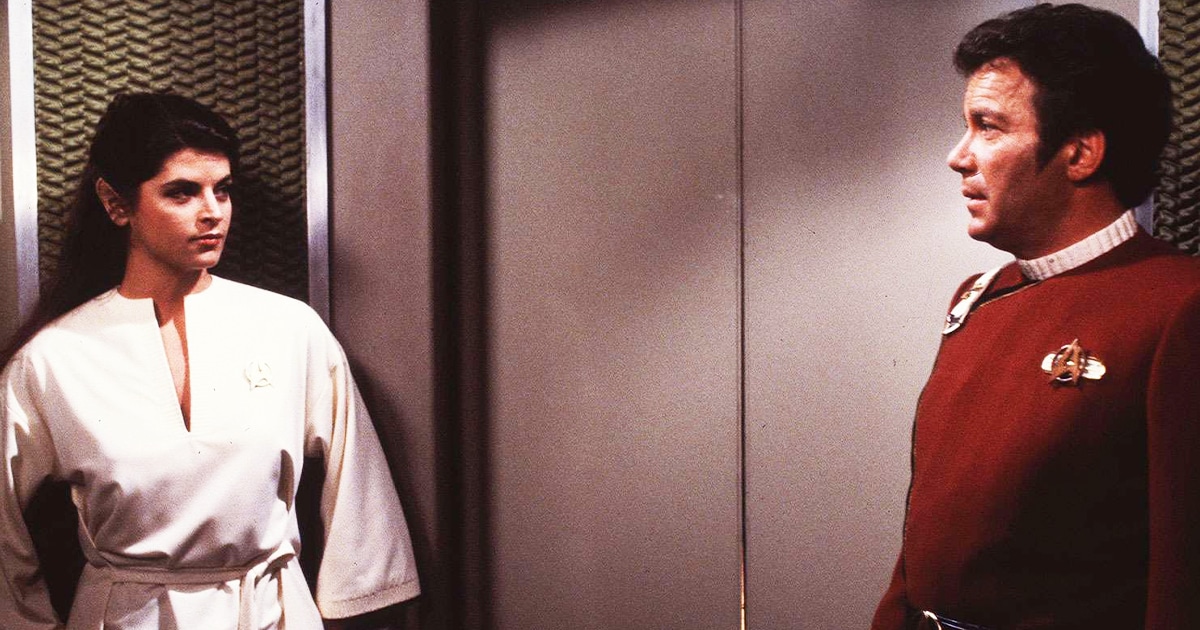
What Alley lacked in experience, she made up for in dedication once work was underway. Meyer recalls that Alley – who apparently “wore the ears to bed” – brought a lot of her own ideas to the role. These included her insistence that she often wear her hair down, and her suggestion that she perform one of her key scenes with Shatner – in which Saavik and Kirk share an elevator – whilst dressed in a Starfleet-branded bath robe.
Shatner has often butted heads with co-stars, and Alley was reportedly no exception. Rumour has it that Shatner was angry that the young newcomer stole the spotlight from him in the elevator scene, and the elder actor took major exception to Alley’s performance in the film’s climactic funeral scene, in which – despite being a member of the famously stoic Vulcan race – Saavik sheds tears.
Meyer explains: “I didn’t instruct her to weep. When I saw it happening, I remember Shatner came over to me and said, ‘You’re not going to let her do that, are you? Vulcans can’t cry.'” Alley insisted afterwards that her tears were not planned. “I just started crying because I thought it was sad that Spock died when we were shooting the scene. It was so surreal and so sad. I just started crying and they used it. It wasn’t some big dramatic coup. I was really sad.”
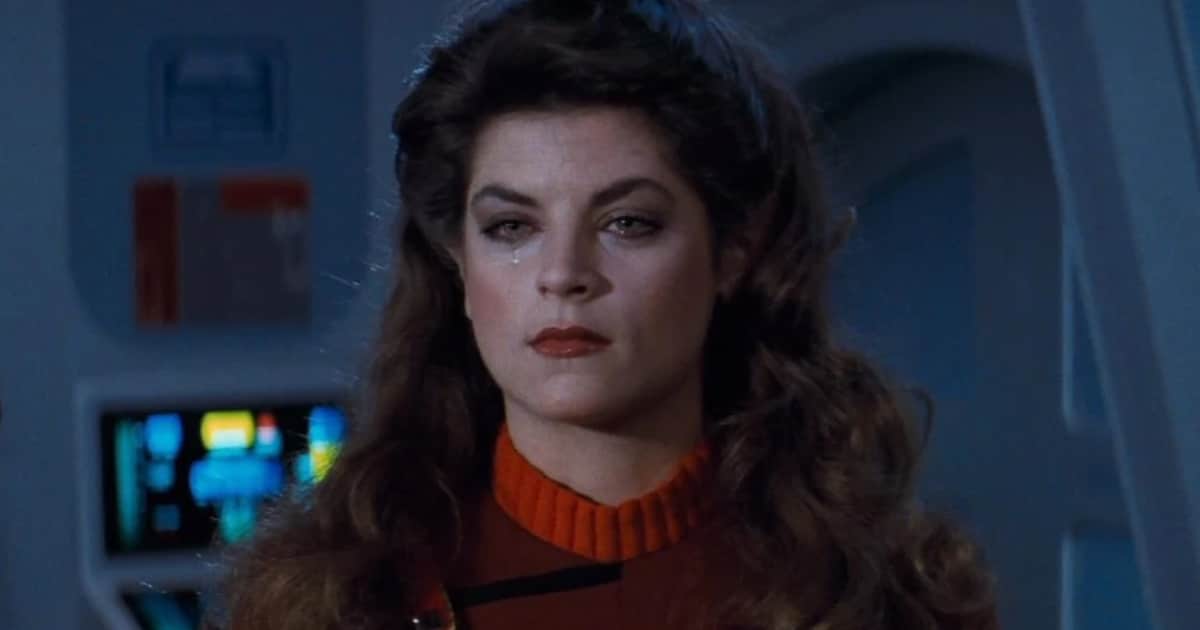
Released in June 1982 to enthusiastic reviews and box office takings of $97 million (a considerable haul at the time), Star Trek II: The Wrath of Khan was a bona fide hit. The film’s climax paved the way for a direct follow-up, and when work got underway on Star Trek III: The Wrath of Khan, it was intended that Alley would return as Saavik.
Accounts vary as to what happened next, but the chief issue would seem to be money. Star Trek III saw the departure of Nicholas Meyer, who had been Alley’s strongest advocate, and Leonard Nimoy was instead given the director’s chair. In his memoir I Am Spock, Nimoy claimed that Alley (or at least her agents) made salary demands that were “so far beyond our reach that it left me slack-jawed… higher than what was being paid to [Bones McKoy actor] DeForest Kelley after 17 years!”
Later, Nimoy reiterated this claim in William Shatner’s book Star Trek Memories. “We just couldn’t afford [Alley]… She’d been paid a decent sum for Star Trek II for a beginner, and I think the studio was prepared to pay her more than twice that for III.” While Star Trek II had been a success, it hadn’t made Alley an overnight superstar with the power to make significant financial demands.
“She had some issue, and I don’t know what that issue was”

Alley admitted she turned down Star Trek III over money – but she claimed that, while Saavik had a more significant role in the third film, the studio offered less than she had been paid for Star Trek II. “That never made sense to me. Like, ‘You’re not paying as much as the first one, and it’s a bigger role?’ It just didn’t make sense to me.”
Alley did hint that one specific person might have been responsible for the alleged decision to pay her less. At the time she remarked, “I don’t know who it was. I’ve heard rumors”. In 2021 documentary series The Center Seat: 55 Years of Star Trek, Alley was less guarded, declaring outright she believed the person responsible was William Shatner.
Another comparative newcomer, Robin Curtis, took over as Saavik in Star Trek III – and, unlike Alley, she signed a multi-picture deal to reprise the role in two further films. Unfortunately for Curtis, she too wound up short-changed, as her second appearance as Saavik in 1986’s Star Trek IV: The Voyage Home proved to be a single scene cameo, and her last appearance in the role.
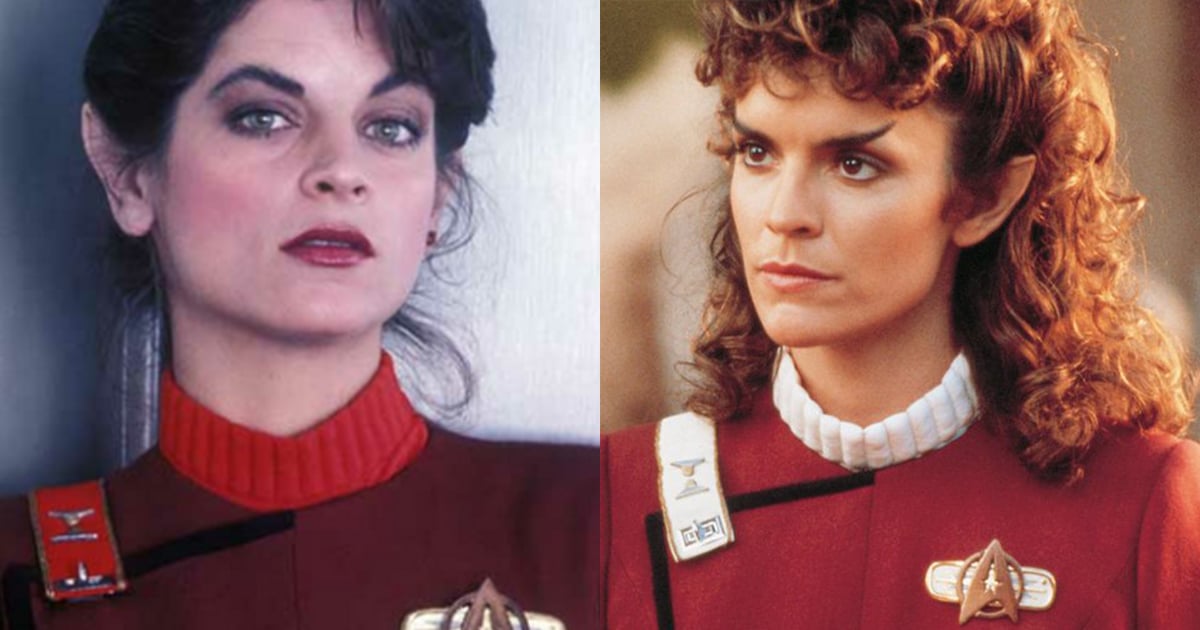
This was a significant change from the original plan for the character: after briefly becoming Spock’s lover in Star Trek III, Curtis was told that in the sequel “Saavik would be pregnant and there’d be this whole connection between her and Spock. Lo and behold, all this hope that there might be greater involvement for the character turned into those few lines.”
While Curtis would return to the Trek universe in a different role for two episodes of Star Trek: The Next Generation, Alley never made another appearance in the franchise – although she came close to reprising the Saavik role in 1991’s Star Trek VI: The Undiscovered Country, which saw Nicholas Meyer once again take the director’s chair. Meyer, who reportedly had not enjoyed Robin Curtis’ take on Saavik, offered Alley the part personally, but recalls “she had some issue, and I don’t know what that issue was”.
Another problem was that Star Trek creator Gene Roddenberry disapproved of Meyer’s plan to make Saavik a traitor, feeling this would be hurtful to fans of the character. Meyer took exception to Roddenberry’s attempt to overrule him (“I wrote the character of Saavik in Star Trek II. That wasn’t a Gene Roddenberry character”), but with Alley unwilling to return there was little choice but to rewrite the character into Lt Valeris, portrayed in Star Trek VI by Kim Cattrall.
“Star Trek was…one of the most stunning moments of my life”

In any case, by the time Star Trek VI opened in 1991, Kirstie Alley was a considerably bigger deal than she had been nine years earlier. In 1987 she took over from Shelley Long as the female lead on hit sitcom Cheers, which sent her career skyrocketing. Concurrently, she enjoyed big screen success alongside John Travolta in 1989 comedy blockbuster Look Who’s Talking and its two sequels.
After Cheers ended in 1993, Alley’s fortunes were more mixed. Her follow-up sitcoms Veronica’s Closet, Fat Actress and Kirstie proved less successful, and her movie career – taking in Mary-Kate and Ashley vehicle It Takes Two (1995) and Woody Allen comedy Deconstructing Harry (1997) – yielded few hits. Her most prominent screen work from 2010 onwards was on reality TV, including appearances on The Dr. Oz Show, Dancing with the Stars, the UK’s Celebrity Big Brother and The Masked Singer.
Off-camera, Alley had some personal issues, divorcing second husband Parker Stevenson in 1997 (she never remarried, though she and Stevenson had two adopted children), and her struggles with weight attracted much tabloid commentary. Alley also became a controversial figure due to her commitment to the Church of Scientology, and in her later years for her outspoken support of President Donald Trump.
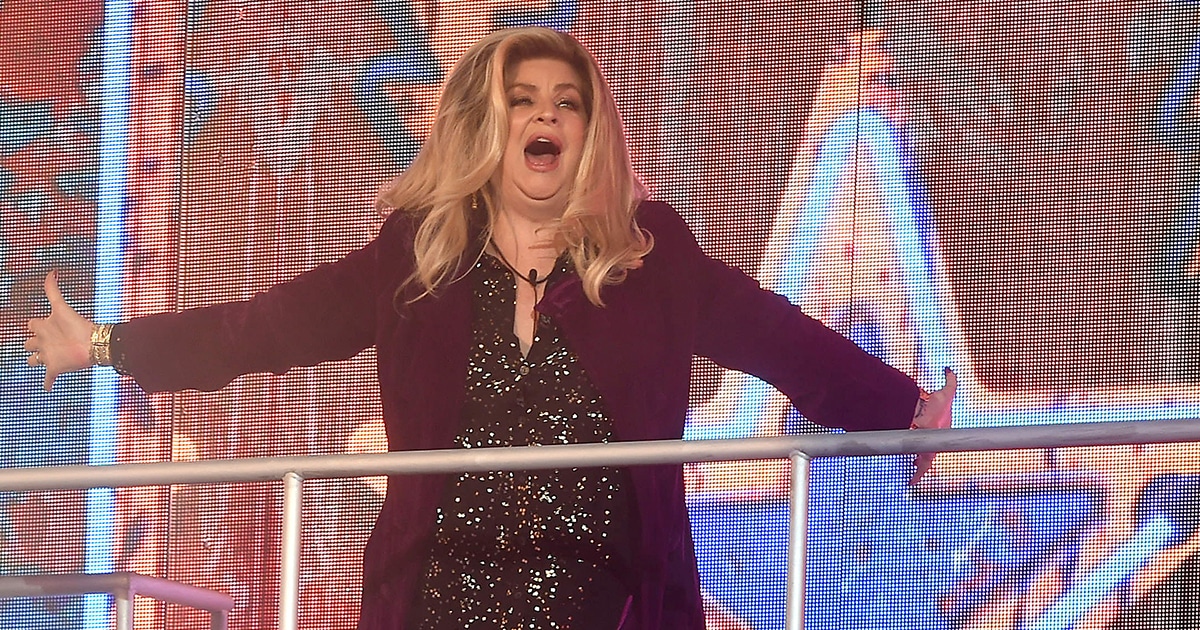
One accusation often directed at Alley that she always pushed back on, however, was that she showed nothing but disdain for Star Trek after it launched her career. Alley denied this, declaring to her Twitter followers in 2015 that she was “forever grateful” for the role of Saavik, calling Star Trek II “my first job and one of the most stunning moments of my life.”
Alley’s tweets also showed that, whatever happened between them on Star Trek II, she had made her peace with Shatner in her later years. In 2013 she called him “the worlds greatest”, to which Shatner replied, “And THAT is why I love you!” Shatner was also among the first to post his condolences on social media following Alley’s death from cancer in December 2022, remarking he was “saddened” by the news.

